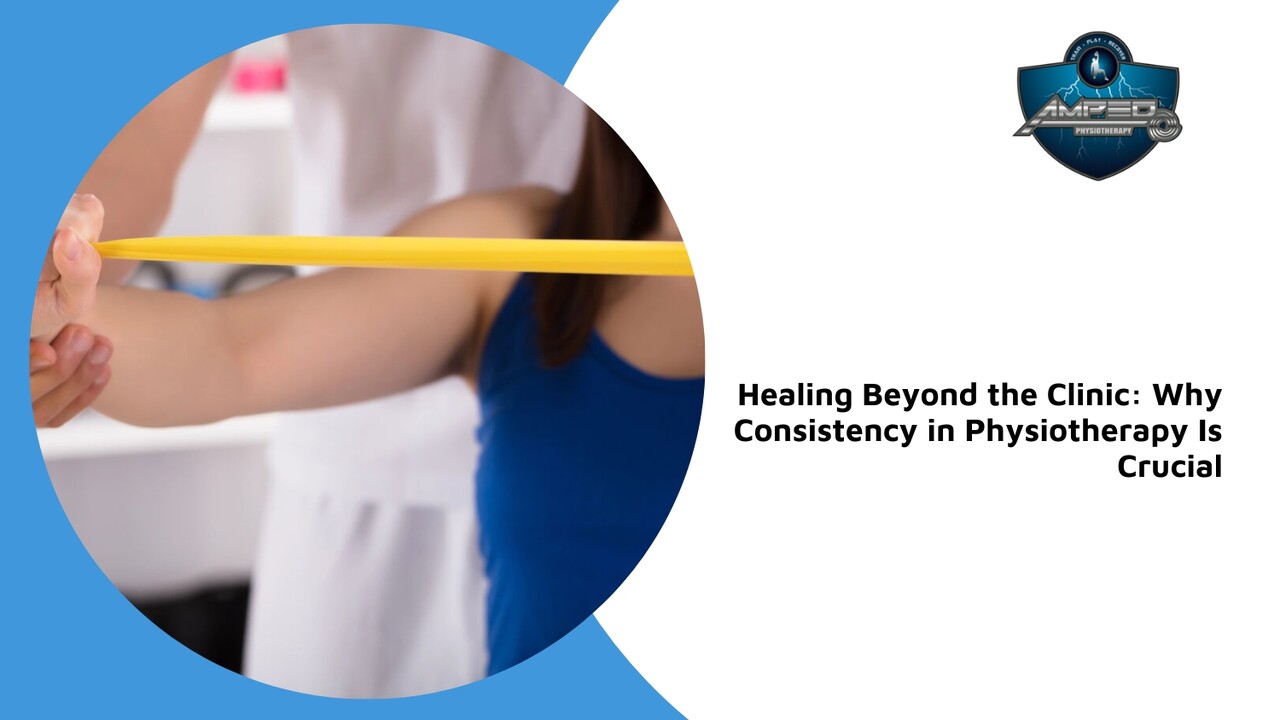TMJ dysfunction can make everyday activities like eating, talking, and even sleeping uncomfortable. Often caused by factors like jaw clenching, poor posture, or stress, this condition affects the joints and muscles that control jaw movement—leading to pain, tightness, and restricted mobility. In this blog, we’ll explore what TMJ dysfunction is, how it affects daily life, and how physiotherapy offers an effective, non-invasive approach to TMJ relief. We’ll also look at common treatment techniques, expected recovery timelines, and lifestyle strategies to support long-term improvement.
Understanding TMJ Dysfunction and Its Effect on Daily Life
TMJ dysfunction refers to problems with the temporomandibular joints, which connect your lower jaw to your skull and allow you to chew, speak, yawn, and perform other essential jaw movements. This dysfunction can arise from a variety of causes, including jaw clenching or teeth grinding, poor posture—especially forward head posture—direct trauma to the jaw, arthritis affecting the joint, chronic stress leading to muscle tension, or structural misalignment of the jaw.
People with TMJ dysfunction often experience jaw pain or tenderness, clicking or popping when opening or closing the mouth, limited ability to open the mouth wide, or even episodes where the jaw becomes locked. Other symptoms may include headaches, earaches, facial tightness, and pain in the muscles surrounding the jaw. These issues can interfere with everyday tasks like eating, speaking, and sleeping, reducing overall comfort and quality of life. If left untreated, TMJ dysfunction can worsen over time, leading to chronic pain and further deterioration of joint function.
Physiotherapy for TMJ Dysfunction Explained
Physiotherapy is a safe, non-invasive treatment option that can significantly reduce TMJ symptoms and restore jaw function. By addressing the underlying muscular and joint imbalances, physiotherapy helps reduce pain, improve movement, and prevent the condition from worsening. Some of the key benefits include:
- Pain Reduction: Physiotherapy techniques help relieve inflammation and muscle tension in the jaw and surrounding areas.
- Improved Jaw Mobility: Manual therapy and guided exercises restore proper joint mechanics, making it easier to open and close the mouth.
- Correction of Muscle Imbalances: Targeted exercises help rebalance overactive or weak muscles that contribute to joint dysfunction.
- Postural Correction: Physiotherapy can improve neck and head posture, which often contributes to TMJ symptoms.
- Stress Management Tools: Therapists may introduce relaxation and breathing techniques to reduce clenching or grinding habits linked to stress.
- Avoidance of Invasive Treatments: For many, physiotherapy eliminates the need for injections or surgical interventions.
By tailoring treatment to the individual’s condition and lifestyle, physiotherapy provides a holistic approach to managing TMJ dysfunction.
Techniques Physiotherapists Use for TMJ Dysfunction
A physiotherapy treatment plan for TMJ dysfunction may involve a variety of hands-on and exercise-based approaches. Common techniques include:
- Manual Therapy: Gentle mobilizations of the jaw and soft tissue massage of the facial and neck muscles reduce tension and improve joint movement.
- Myofascial Release: A hands-on technique targeting muscle tightness and trigger points in the jaw, neck, and shoulders.
- Postural Training: Exercises to correct forward head posture and neck alignment, which can contribute to TMJ strain.
- Jaw Movement Retraining: Teaching clients how to move the jaw properly without compensating with other muscles.
- Stretching and Strengthening Exercises: Targeted movements help restore range of motion and balance the muscles that support the jaw.
- Relaxation and Breathing Techniques: These reduce overall tension in the face and jaw, particularly for those who clench their teeth due to stress.
- Home Exercise Programs: Personalized exercises allow clients to maintain progress between sessions and manage symptoms independently.
Each treatment plan is tailored to the individual, with techniques selected based on the severity of symptoms, contributing factors, and overall health.
How Long Does It Take to See Results From Physiotherapy for TMJ Dysfunction?
The timeline for seeing results from physiotherapy for TMJ dysfunction varies depending on how severe the condition is, how long symptoms have been present, and how consistently the individual follows the treatment plan. Many people with mild to moderate dysfunction begin noticing relief within two to four weeks, especially when attending regular sessions and practicing prescribed home exercises. More persistent or complex cases, such as those related to poor posture or chronic clenching, may require six to ten weeks or longer to see sustained improvements.
In cases where jaw dysfunction is post-surgical or involves more complex structural issues, treatment may be ongoing and coordinated with other healthcare providers. Overall progress is gradual, and improvements in pain, mobility, and function tend to occur over time. Maintaining open communication with your physiotherapist is key to monitoring results and adjusting the plan as needed for the best outcome.
Exercises Used in TMJ Physiotherapy Treatment
Therapeutic exercises are a key part of TMJ physiotherapy treatment. These exercises aim to reduce tension, improve jaw alignment, and restore proper muscle function. Common exercises include:
- Controlled Jaw Opening: Place your tongue on the roof of your mouth and slowly open your mouth without letting your tongue lose contact.
- Isometric Jaw Resistance: Apply gentle pressure to your jaw with your hand while resisting the movement, helping build strength and stability.
- Lateral Jaw Movements: Slowly move your jaw from side to side, working to improve range of motion and reduce stiffness.
- Chin Tucks: Tuck your chin slightly while maintaining good posture to reduce forward head position, which can strain the TMJ.
- Scapular Retractions: Squeeze your shoulder blades together to promote upper body posture and relieve strain on the neck and jaw.
- Neck Stretches: Gentle stretches to the upper trapezius, levator scapulae, and sternocleidomastoid muscles help reduce referred tension in the jaw.
A physiotherapist will tailor these exercises based on your symptoms and ensure they are performed correctly to avoid irritation or strain.
Is Physiotherapy a Long-Term Solution for TMJ Dysfunction?
Physiotherapy can provide lasting relief for TMJ dysfunction when the treatment approach addresses not just the symptoms, but also the underlying causes. Long-term success often depends on several factors, such as how severe and long-standing the dysfunction is, and how consistently the individual performs prescribed exercises and attends follow-up sessions. Sustainable outcomes are more likely when individuals are also willing to make lifestyle and postural adjustments, such as avoiding jaw clenching or improving workstation ergonomics.
In many cases, people experience significant and lasting improvement without needing surgical intervention. Periodic check-ins or maintenance exercises may be recommended to ensure symptoms don’t return, especially for those with a history of jaw tension or postural imbalances. With proper guidance and commitment, physiotherapy can be an effective long-term strategy for managing TMJ dysfunction.
Lifestyle Changes to Help Manage TMJ Pain
In addition to physiotherapy, certain lifestyle adjustments can significantly improve TMJ symptoms and reduce flare-ups. These changes help minimize stress on the jaw and promote healing over time:
- Improve Posture: Maintain upright head and shoulder alignment, especially when sitting or working at a desk.
- Avoid Chewing Gum or Hard Foods: Stick to softer foods and avoid excessive jaw movements that can strain the joint.
- Manage Stress: Stress is a common contributor to jaw clenching and teeth grinding. Relaxation techniques such as deep breathing, meditation, or yoga can help.
- Use Heat or Cold Packs: Apply heat to loosen tight muscles or cold to reduce inflammation, based on your therapist’s recommendation.
- Be Mindful of Jaw Position: Keep your jaw relaxed with a slight gap between your teeth when at rest. Avoid habits like nail biting or leaning your hand on your chin.
- Wear a Night Guard (if recommended): For individuals who grind their teeth at night, a custom dental appliance can help reduce stress on the TMJ.
When combined with physiotherapy, these changes support long-term improvement and help prevent recurring symptoms.
Don’t Let Jaw Pain Ruin Your Day
If you’re dealing with jaw pain, stiffness, or TMJ-related headaches, physiotherapy offers a proven path to relief. A personalized treatment plan can help restore function, reduce discomfort, and improve your quality of life—without the need for surgery or medication.At Amped Physiotherapy in Ottawa, we provide targeted care designed to address the root causes of TMJ dysfunction. Contact us today to begin your recovery with a customized physiotherapy plan tailored to your needs.









